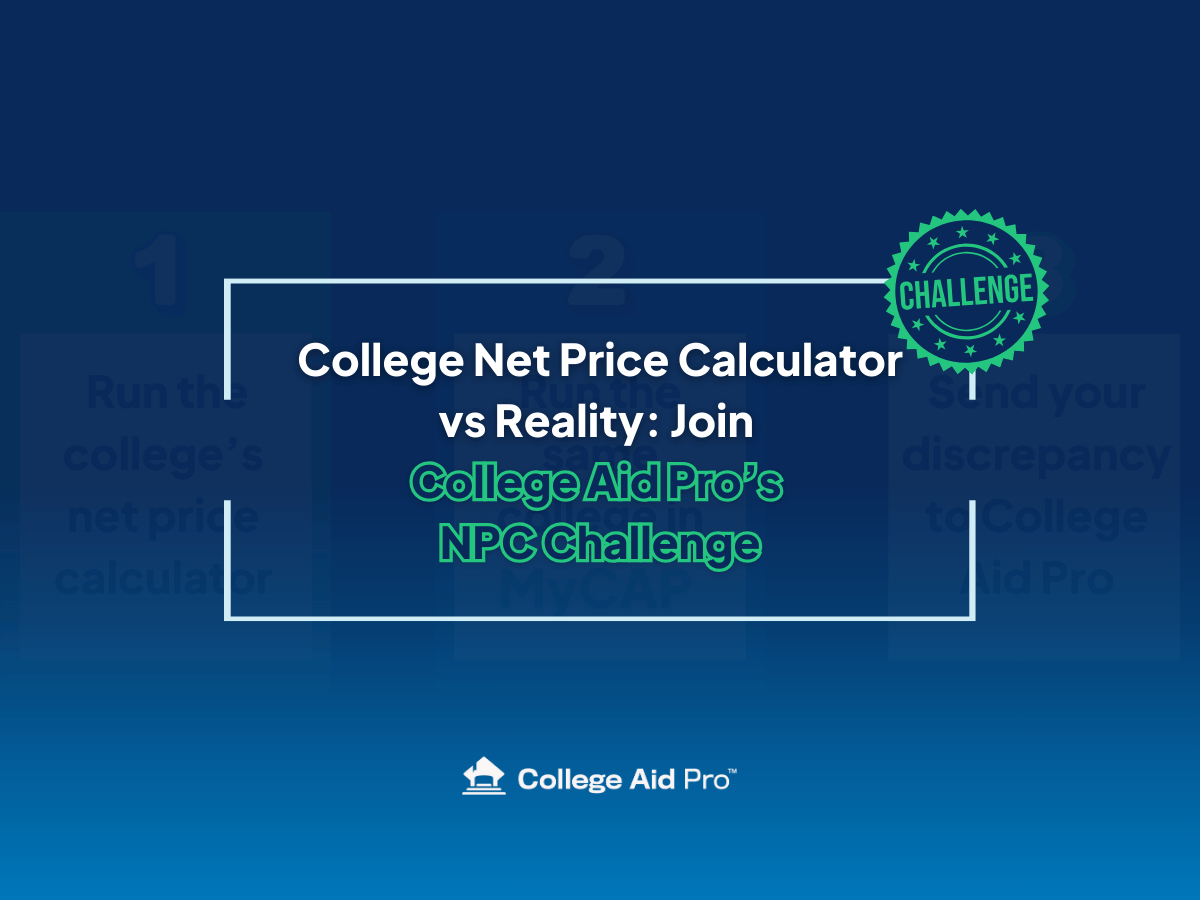
If you’re a parent heading into the college process, chances are you’ve heard of the FAFSA. Maybe you’ve filled it out before, or maybe this is your first time navigating it. Either way, let’s be honest, this isn’t anyone’s favorite adulting task. Even when you know what you’re doing, it’s still right up there with doing your taxes or assembling IKEA furniture: necessary, mildly tedious, and definitely doable, but not something you’d call a good time!
The FAFSA (Free Application for Federal Student Aid) is one of those things that seems straightforward on the surface, but the moment you sit down to do it, the questions start. I’ve been there, double-checking documents, re-reading instructions, and wondering if one wrong answer would mean less money or opportunities for my kid.
That’s why I put this together: everything I wish I had known before I filled it out myself. Whether you’re new to the process or just need a clearer path forward, I hope this guide saves you some time, stress, and second-guessing.
What Is the FAFSA and Why Bother With It?
The FAFSA, or Free Application for Federal Student Aid, is the form your student needs to complete in order to be considered for just about any type of financial aid. It’s the key that unlocks a wide range of options, including:
-
Pell Grants – These are need-based grants awarded to undergraduate students who demonstrate significant financial need. The money doesn’t need to be repaid, which makes it one of the most valuable types of aid available. Pell eligibility is based on your FAFSA responses and changes from year to year based on income, household size, and other factors.
-
Federal Direct Student Loans (FDSL) – These are loans your student can take out in their own name. There is no co-signer and no credit check. You don’t need to “qualify” for them the way you would a private loan. Filing the FAFSA is essentially your ticket in. There are annual limits (typically between $5,500 and $7,500 depending on the student’s year in school), and they come with relatively low interest rates and flexible repayment options.
-
Parent PLUS Loans – These are federal loans that parents can take out to help cover remaining college costs after other aid is applied. A quick credit check is required, and starting July 1, 2026, borrowing will be capped at $20,000 per year per student, with a lifetime maximum of $65,000 per student. This is a major shift, and something families should plan around if they were counting on using PLUS loans more heavily.
-
Work-Study Programs – These offer students the opportunity to earn money through part-time, on-campus jobs. The funds can be used to cover books, supplies, personal expenses, or even put toward tuition. Work-study doesn’t get applied directly to the tuition bill; students get paid as they earn it, just like a regular job, but it’s often more flexible and campus-friendly.
-
State and Institutional Aid – Many states and colleges use FAFSA data to determine eligibility for their own grants and scholarships. Skipping the FAFSA can mean missing out on aid that’s not even federal, but is money that could significantly reduce your out-of-pocket costs.
And here’s something that often gets overlooked: the FAFSA isn’t just for families with significant financial need. It’s what gives your student access to federal loans, work-study, and sometimes merit-based aid too. And beyond that, it acts as a bit of a safety net. If your financial picture changes mid-year – job loss, medical expenses, unexpected shifts, having a FAFSA on file makes it much easier to appeal for additional help. Skip it, and you might find yourself with fewer options when it really counts.
Smart Tips for Getting It Right the First Time
After going through this process myself—and hearing from plenty of other families—I’ve found a few things that make a big difference. These tips can help you avoid delays, minimize frustration, and get the FAFSA submitted without second-guessing every click.
1. Create Your FSA ID(s)
Before you can fill out the FAFSA, both the parent and the student will need their own FSA ID. This acts as your secure login for everything related to federal student aid. The good news is that if you have a valid Social Security number, your FSA ID is now verified immediately. No more waiting a few days.
If you already have an FSA ID from a previous student or from filling out the FAFSA in past years, you’ll use the same one. You don’t need to create a new account for each child. You’ll use your existing parent FSA ID for every FAFSA you’re involved with.
👉 You can create or retrieve your FSA ID here.
If you’re divorced or separated, the FAFSA needs to be completed by the custodial parent, the parent who provided the most financial support over the past 12 months (not necessarily the one who claims the student on taxes or who the student lives with). That parent will need to create an FSA ID and complete the FAFSA as a contributor, which is the official term used for anyone (parent or spouse) who provides information on the form.
2. Gather What You’ll Need Before You Start
The FAFSA will now import your tax information directly from the IRS, which helps. But you’ll still need to have a few key details ready to go, some for you and some for your student.
What the parent will need to report:
-
Bank account balances (as of the day you file)
-
Child support received
-
Net worth of businesses, farms, and investments
-
529 plan balances owned by the parent for the student whose FAFSA you’re completing
(Note: You don’t report 529s for siblings. Only list plans where you are the owner and this student is the beneficiary.)
You don’t need to report:
-
The value of your primary home
-
Retirement accounts like IRAs or 401(k)s
-
529 plans owned by grandparents or anyone else
What the student will need to report:
-
Bank account balances in their name
-
Any income they’ve earned
-
Student-owned UGMA/UTMA accounts
-
Investments or savings in their name
Quick note on taxes: The FAFSA uses “prior-prior year” tax information. That means if you’re filling out the FAFSA in October 2025 for the 2026–27 school year, it will pull your 2024 tax return data. You won’t need to estimate or guess, just make sure your return for that year is filed and accurate.
Getting these numbers organized ahead of time makes the FAFSA go much more smoothly, and reduces the chance you’ll need to circle back or amend your submission.
3. Watch Out for This Confusing Loan Question
There’s one question in the student section that causes more issues than it should. It appears under the heading:
“Apply for a Direct Unsubsidized Loan Only”
And it asks:
“Are the student’s parents unwilling to provide their information, but the student doesn’t have an unusual circumstance that prevents them from contacting or obtaining their parents’ information?”
If your student answers YES, it tells the FAFSA system that you (the parent) aren’t contributing any financial information, which automatically disqualifies them from being considered for federal aid like Pell Grants, Federal Work-Study, and Subsidized Direct Loans.
Unless your student is filing entirely independently, the correct answer here is almost always NO.
4. Know Who’s Doing What and When
While the FAFSA belongs to your student, you’ll likely be the one handling a good chunk of the form—especially the financial part. But it’s important to understand how the pieces fit together.
Once your student starts their FAFSA, they’ll invite you as a contributor (the FAFSA’s term for anyone providing information besides the student, usually a parent or guardian). You’ll get an email with a unique code to log in and complete your section.
We’ve found that it’s best for the student to complete their portion first before the parent jumps in. It helps keep things in order and tends to reduce system errors and mismatched information.
When you do log in as the parent/contributor, double-check that your name, Social Security number, and date of birth match exactly with what’s on record. Even small mismatches can cause frustrating delays or lock you out of your section altogether.
FAFSA FAQs Parents Ask All the Time
When should I file the FAFSA?
As soon as it opens—typically October 1st for the upcoming school year. The earlier you file, the better. Some aid is first come, first served, and early filing helps ensure you don’t miss out.
What’s the deadline to file the FAFSA?
Deadlines vary. The federal deadline is usually in June, but state and college deadlines can be much earlier, sometimes as early as February or March. Check with each school on your student’s list to be safe. Submitting it early gives your student the best chance at receiving all the aid they’re eligible for.
Do we need to fill this out every year?
Yes. The FAFSA must be submitted every academic year your student wants aid. Even if nothing changes from year to year, schools still require a fresh application.
What happens after we submit the FAFSA?
After submission, your student will receive a Student Aid Report (SAR). This is a summary of the FAFSA you just completed. Review it closely to make sure all the information is accurate.
The SAR will also include the SAI (Student Aid Index)—a number colleges use to estimate your family’s ability to contribute. It’s not a bill or a guarantee, but it gives schools a benchmark to build your financial aid offer. That information is sent to every school your student listed, but most financial aid packages won’t arrive until late winter or early spring.
If you want a sneak peek at your SAI before the FAFSA even opens, our MyCAP tool calculates your SAI it based on your real financial info so you know what to expect and can plan ahead.
What if our finances have changed since we filed taxes?
If your current financial situation isn’t reflected in your tax return—due to job loss, unexpected expenses, or anything else—you can request a professional judgment review from the college. They may be able to adjust your student’s aid based on new circumstances.
What if I make a mistake on the FAFSA?
You can log back in, make corrections, and resubmit. Just be sure both you and your student sign again. If the mistake shows up after school starts, contact the school’s financial aid office, and they may be able to fix it on their end.
Is there an income cutoff for FAFSA?
No. There’s no hard income ceiling that disqualifies you. The formula looks at things like income, assets, household size, and tax filing status. Even if you’re not eligible for grants, the FAFSA is still your entry point for federal student loans, and potentially some merit or institutional aid, depending on the school.
Can undocumented students apply?
Undocumented students aren’t eligible for federal aid through the FAFSA. However, some states and schools have their own aid programs or alternate applications. It’s worth checking each school’s financial aid website for specific guidance.
Final Thoughts
The FAFSA isn’t anyone’s favorite task, but it’s an important one. It opens the door to financial aid opportunities that can make college more affordable, more accessible, and a lot less stressful in the long run.
Start early, gather your info ahead of time, and lean on tools like MyCAP to estimate your Student Aid Index (SAI) before the FAFSA even opens. You’ll have a head start understanding what colleges might offer, and how much you’ll really need to pay.
You’ve got this.






